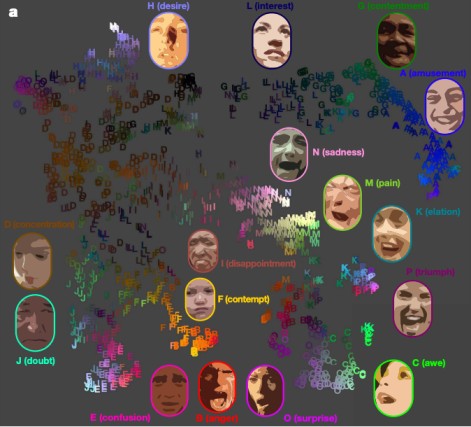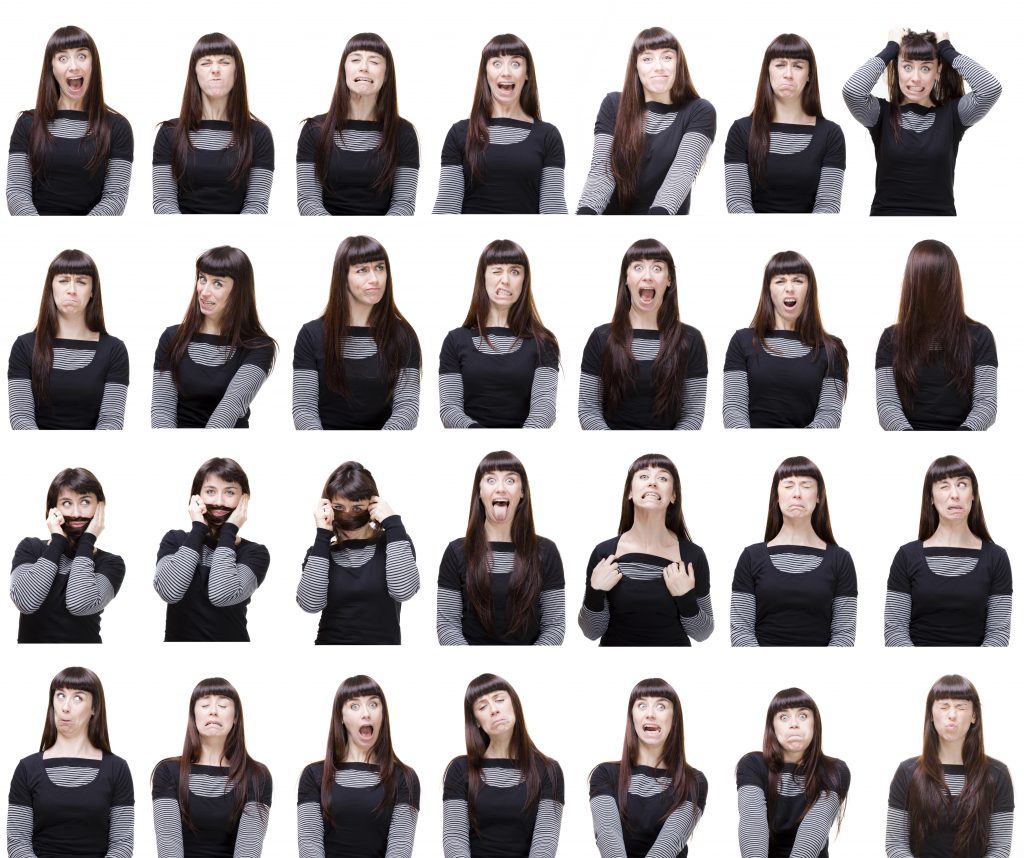The Face is Special: The Seven Universal Emotions
Those of you who have been following us (thank you!) know that faces do many things, and one very special thing that faces do is express emotion.
Over half a century of scientific research has documented that seven facial expressions of emotion are universally expressed and recognized, all around the world, regardless of race, culture, nationality, religion, gender or any other demographic variable.
They are: Anger, Contempt, Fear, Disgust, Happiness, Sadness, Surprise

Read our previous blog for cues on how to identify the seven basic emotions listed above.
What are Basic Emotions?
These findings led to decades of research that led to the identification of what are known as basic emotions.
Basic emotions are a class of emotion for which there is abundant research evidence for certain characteristics, including
- Universal, underlying psychological triggers or antecedents
- Unique physiological signatures
- Pan-cultural cognitive gating
- Cross-cultural feelings and experiences
- Universal nonverbal expressions in the face, voice and body.
Of course, basic emotions are not the only kind of emotions humans have; we have many other, very different types of emotions. But basic emotions are a special type of emotion because research has demonstrated that they have those unique characteristics above that others do not (or more precisely, research has yet to find them in other emotions).
Our view of basic emotions is based on universal, observable nonverbal behavior in facial expressions. But our view is not the only way to characterize basic emotions. Scholars have differed in what they call “basic emotions.”
We believe that different characterizations of the emotion system in humans do not necessarily argue against each other (although scholars and researchers love to argue with each other); rather they are different ways of understanding the very complex emotion system.
For discussion about other ways to classify basic emotions, read this past blog.
The Universality of Facial Expressions of Emotion
Some scholars have argued against the idea of basic emotions and the universality of facial expressions of emotion. We have reviewed very closely all of those claims (that recycle themselves every couple of decades) and the evidence cited in support of them. As we have mentioned before, we are very happy to have a scientific, technical discussion about that evidence with anyone.
We stand by our conviction that facial expressions of emotion are universal and biologically innate, and that the link between a spontaneous, intense, and meaningful emotional reaction and a corresponding facial expression has never been refuted by any study. For more info on why we think so, read this past blog on the topic.
Emotions and Nonverbal Behavior

Research of the last two decades have furthered our understanding of emotions and nonverbal behavior.
Much of this research has linked facial expressions with other nonverbal channels – gaze, head, and whole body movements – to express emotions across cultures, such as shame and embarrassment, love, gratitude, sympathy, pride, and triumph.
Read more about our research on triumph here.
The Latest Facial Expressions Research
 The latest research findings continue to expand our knowledge about emotion, nonverbal behavior, and facial expressions.
The latest research findings continue to expand our knowledge about emotion, nonverbal behavior, and facial expressions.
A recent study published in Nature Research reported that 16 facial expressions occur in similar contexts worldwide (amusement, anger, awe, concentration, confusion, contempt, contentment, desire, disappointment, doubt, elation, interest, pain, sadness, surprise, triumph).
To be sure, not all of these are emotions (e.g., concentration, confusion; but that depends on one’s definition of emotion), and those that are emotions are likely variants of the original seven universal facial expressions of emotion. Interestingly, there were no cultural differences in the facial configurations of these expressions, but there were cultural differences in how strongly they were expressed.
Thus, today we can still safely conclude that there are at least seven emotion families that are primarily expressed in the face that are universally expressed and recognized. These emotions and expressions likely serve as the basis by which variants occur, and these variants may likely be universal as well. Additionally, there are other types of facial expressions that are likely universal, not of emotion but of cognition or cognitive processes. And facial expressions combine with other bodily movements to convey other emotions.
All this research is leading to more nuanced understandings of emotions and nonverbal behavior. Although we know that emotions, when elicited, recruit coordinated, whole-body responses, there are likely different parts of the body that are more salient for some emotions with regard to expressive behavior observable by others.
We believe that different nonverbal channels were recruited to convey specific emotions based on their function within our evolutionary history. For example, conveying fear with our faces and bodies was more adaptive for humans in the past because people could observe fear reactions from farther away than just by seeing faces alone.
Recognizing emotions such as surprise or disgust from a distance was not as important, so these were more easily conveyed more solely by faces. This is one reason why accuracy rates in multiple studies of judging fear solely through facial expressions are generally lower than rates for other emotions.
What Else Our Faces Do
 Finally, let’s not forget that expressing emotion is just one thing that faces do. We also know that facial behavior has many other functions such as:
Finally, let’s not forget that expressing emotion is just one thing that faces do. We also know that facial behavior has many other functions such as:
- Signaling cognition and cognitive processes (which the research described above demonstrated)
- Signaling specific verbal words or phrases
- Articulating speech
- Signaling physical exertion or physical effort
- Other idiosyncratic things
See our blog here for more discussion. All in all the research to date continues to demonstrate the power of faces all around the world.
I just watched a program on CuriosityStream and titled first man. In that program it was stated empathy was the first emotion of man. What are your thoughts!
I don’t think empathy was the first emotion of man. The first question becomes whether empathy is an emotion or not. There’s also not an entire consensus on what the definition of empathy is.
I think many people would suggest that empathy itself is a combination of an emotion with something else. It certainly involves emotions. Most definitions would suggest it revolves around a cognitive or affective reaction to somebody else’s emotions. It becomes a cognitively and affectively complex idea because if that is the way you define empathy, it requires cognitive input of an emotion. It requires cognition about emotion. Which means some emotions had to be there in the first place. It also means you have to have the complex cognitive ability to have cognitions about emotions. Thus empathy could not be the building block of that process.
Dave, excellent article